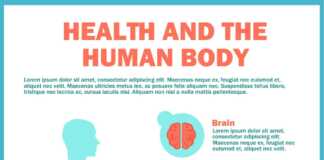Memory is an integral part of our lives, allowing us to store and recall information from our past experiences. Without memory, we would struggle to learn new things, make decisions, and carry out our daily activities. The capacity of human memory has been a topic of interest for scientists and researchers for centuries, and the question of how much information we can store remains a subject of ongoing debate.
In this blog, we will explore the different types of memory, how memory works, and the limits of human memory capacity. We will also discuss the role of technology in memory storage, memory training, and memory disorders.
Types of Memory
 Image by Freepik
Image by Freepik
There are three main types of memory: sensory memory, short-term memory, and long-term memory.
Sensory memory is the shortest and most fleeting type of memory, lasting only a few seconds. It is the ability to retain information from our senses, such as what we see, hear, or feel. For example, when we see an object, the information is briefly stored in our sensory memory, allowing us to identify and process it.
Short-term memory, also known as working memory, is a type of memory that stores information for a brief period, typically up to 30 seconds. It is responsible for temporarily holding and processing information, such as a phone number, until we no longer need it. Short-term memory has limited capacity, and it can be affected by distractions or interruptions.
Long-term memory is the type of memory that allows us to store and retrieve information over an extended period, ranging from minutes to a lifetime. It is responsible for holding our knowledge and experiences and is divided into two types: explicit memory and implicit memory. Explicit memory, also known as declarative memory, is the memory of specific facts and events that can be consciously recalled.
Implicit memory, on the other hand, is the unconscious memory of skills, habits, and behaviors, such as riding a bike or playing an instrument. Long-term memory has a seemingly unlimited capacity, but the accuracy and accessibility of memories may degrade over time.
Overall, each type of memory plays a critical role in our ability to learn, remember, and navigate our daily lives.
How Memory Works
Memory formation is a complex process that involves the encoding, storage, and retrieval of information. The process begins with attention, which is the ability to focus on and process incoming information. Once attention is engaged, the information is encoded into a form that can be stored in memory.
During the encoding process, information is transformed into a neural code, which is a pattern of electrical and chemical activity in the brain. The hippocampus, a part of the brain responsible for memory consolidation, plays a vital role in the encoding process.
Once information is encoded, it is stored in the brain for future retrieval. Memory storage occurs through a process called consolidation, which involves the transfer of information from short-term memory to long-term memory. Consolidation occurs through the strengthening of neural connections, which occurs through repeated exposure to the information or through the formation of new associations.
Memory retrieval occurs when stored information is retrieved and brought back into consciousness. The retrieval process involves the reactivation of the neural code that was formed during encoding. The prefrontal cortex, a region of the brain responsible for executive functions, plays a crucial role in the retrieval process.
Several factors can affect memory formation and retention. Attention, emotion, and repetition all play a role in memory formation. Sleep is also essential for memory consolidation and retention, as memories are thought to be replayed and strengthened during sleep. On the other hand, stress, distraction, and aging can all impair memory formation and retrieval.
Overall, memory formation and retrieval are complex processes that involve multiple brain regions and are influenced by a range of factors. Understanding these processes can help us better understand memory and develop strategies for improving our memory abilities.
The Capacity of Human Memory
 Image by Freepik
Image by Freepik
Historically, the capacity of human memory has been a topic of interest since ancient times. The ancient Greeks believed that memory was infinite, while other cultures believed that memory was finite and limited. In the 19th century, Hermann Ebbinghaus conducted experiments on memory, discovering that memory retention declined over time and that there was a limit to the amount of information that could be retained.
Current scientific understanding of the capacity of human memory suggests that it is finite and limited, but the exact capacity is difficult to measure. Estimates of the capacity of long-term memory range from several gigabytes to several terabytes, depending on the type of information and the individual’s abilities.
Several factors can limit the capacity of human memory, including the number of neurons and synapses in the brain, the amount of time and effort devoted to learning, and the nature of the information being learned. Additionally, there are limits to the amount of information that can be processed and retrieved from memory at any given time.
Despite these limits, humans are capable of extraordinary feats of memory, such as memorizing entire books or thousands of digits of pi. However, these feats are achieved through specialized techniques and strategies, rather than through innate abilities.
Overall, the capacity of human memory is limited, but the limits are difficult to measure precisely. While there are constraints on memory capacity, humans are capable of impressive memory feats through the use of specialized techniques and strategies.
The Role of Technology in Memory Storage
Technology has had a significant impact on memory storage and retrieval. With the advent of written language, humans were able to store and transmit information beyond the limits of oral tradition. The invention of the printing press allowed for the mass production of books, further expanding the scope of human memory.
In recent years, digital technology has revolutionized the way we store and retrieve information. Computers and mobile devices allow for the easy storage and access of vast amounts of information, such as documents, photos, and videos. The internet provides access to a wealth of knowledge, enabling people to learn and access information from anywhere in the world.
The future of memory storage and retrieval technology is exciting and holds promise for even greater advancements. One area of research is the development of brain-computer interfaces, which could allow for the direct transfer of information between the brain and a computer. This technology could potentially allow for the storage and retrieval of memories and knowledge beyond the limits of our biological brains.
Another area of research is the use of artificial intelligence and machine learning to improve memory storage and retrieval. These technologies could be used to enhance our ability to learn and remember information by analyzing patterns in data and providing personalized recommendations for learning and retention.
While technology has the potential to revolutionize memory storage and retrieval, there are also concerns about privacy, security, and the impact on human cognition and memory abilities. As technology continues to evolve, it will be essential to balance the benefits with the potential risks and drawbacks.
Memory Training
There are various techniques that people can use to improve their memory abilities. Here are some of the most common techniques:
- Mnemonic devices: Mnemonics are memory aids that use associations or visual imagery to help remember information.
- Visualization: Visualizing information can help to make it more memorable, by creating a mental image that can be recalled later.
- Chunking: Chunking involves breaking down information into smaller, more manageable chunks that are easier to remember.
- Repetition: Repeating information can help to consolidate it into memory, making it more likely to be recalled later.
- Association: Associating new information with existing knowledge or memories can make it more memorable and easier to remember.
Memory training programs have become increasingly popular in recent years, with claims that they can improve memory abilities and even reduce the risk of dementia. While there is some evidence to support the effectiveness of memory training programs, the results are mixed and may depend on the type of training and the individual’s abilities.
Some studies have found that memory training can improve memory abilities in older adults, while others have found little to no benefit. Additionally, while some studies have found that memory training can improve specific cognitive abilities, such as working memory or attention, the effects may not generalize to other aspects of memory or cognition.
Overall, memory training can be a useful tool for improving memory abilities, but its effectiveness may depend on a range of factors, including the type of training, the individual’s abilities, and the specific goals of the training. It is also important to note that memory training is not a cure-all for memory problems and should be used in conjunction with other strategies, such as healthy lifestyle choices and medical treatment when necessary.
Memory Disorders
Memory disorders can have a significant impact on a person’s memory capacity and can affect their ability to learn, recall, and retain information. Some of the most common memory disorders include:
- Alzheimer’s disease: Alzheimer’s disease is a progressive brain disorder that affects memory, thinking, and behavior. It is characterized by the accumulation of beta-amyloid plaques and tau protein tangles in the brain, which lead to the death of brain cells.
- Vascular dementia: Vascular dementia is a type of dementia that is caused by damage to the blood vessels in the brain. It can cause memory problems, as well as difficulties with thinking, language, and problem-solving.
- Parkinson’s disease dementia: Parkinson’s disease dementia is a type of dementia that can occur in people with Parkinson’s disease. It is characterized by changes in thinking, behavior, and memory.
- Traumatic brain injury: Traumatic brain injury (TBI) can cause memory problems, as well as other cognitive and behavioral changes. The severity of memory problems can vary depending on the extent and location of the brain injury.
It is important to distinguish between normal memory decline that occurs with age and memory disorders. Normal age-related memory decline is a natural part of the aging process and typically affects the ability to recall new information while leaving long-term memories intact. Memory disorders, on the other hand, can impact both short-term and long-term memory and can progress to the point where it interferes with daily functioning.
Treatment for memory disorders may include medications, cognitive training, and lifestyle modifications. It is important to seek medical attention if you or a loved one is experiencing memory problems that interfere with daily life, as early diagnosis and treatment can improve outcomes and quality of life.
Conclusion
In conclusion, human memory is a complex and dynamic system that plays a crucial role in our daily lives. It is made up of multiple types of memory, including sensory, short-term, and long-term memory, each with its own unique characteristics and limitations.
While the exact capacity of human memory is still a topic of debate, current scientific understanding suggests that it is vast, but not limitless. The capacity of memory is influenced by a range of factors, including age, genetics, and environmental factors.
Advancements in technology have impacted the way we store and retrieve information, and future research will continue to explore ways to improve memory abilities, both through technological advancements and memory training programs.
Memory disorders, such as Alzheimer’s disease and traumatic brain injury, can have a significant impact on memory capacity and daily functioning. It is important to seek medical attention if memory problems are interfering with daily life.
Overall, understanding the capacity and limitations of human memory has important implications for daily life, education, and future research. By improving our understanding of memory, we can develop better strategies for learning, memory retention, and disease prevention.






